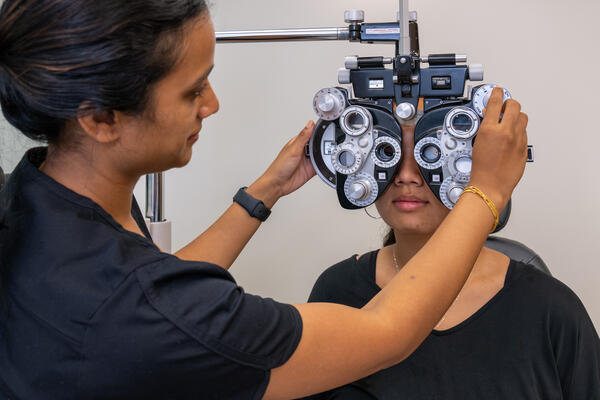Andalusia Pediatrics: Compassionate Look After Your Children
Andalusia Pediatrics: Compassionate Look After Your Children
Blog Article
The Pros and Cons of Different Refractive Surgical Procedures for Boosted Eyecare

LASIK Surgical Treatment
LASIK surgical procedure is a frequently done refractive procedure that intends to correct vision problems such as nearsightedness, farsightedness, and astigmatism. During the treatment, a slim flap is produced on the cornea, and a laser is utilized to reshape the underlying cells, correcting the refractive error.
One of the primary advantages of LASIK surgical procedure is the quick improvement in vision experienced by numerous people. It is important for people thinking about LASIK surgery to go through a comprehensive analysis by an eye care specialist to establish if they are appropriate candidates for the procedure.
PRK Treatment
The PRK treatment, also understood as Photorefractive Keratectomy, is a sort of refractive surgical procedure that aims to fix vision issues similar to LASIK surgical procedure. Unlike LASIK, which involves creating a flap in the cornea, PRK services the surface layer of the cornea. Throughout the PRK treatment, the outer layer of the cornea, called the epithelium, is removed to enable reshaping of the underlying corneal tissue with an excimer laser. This improving aids to remedy refractive errors such as farsightedness, astigmatism, and nearsightedness.
One of the benefits of PRK over LASIK is that it removes the risk of flap-related problems because no flap is developed during the surgical procedure. Regardless of the longer recuperation duration, PRK can be an ideal choice for individuals looking for vision correction surgery.
SMILE Surgical Procedure
An advanced refractive surgery strategy gaining popularity in the field of ophthalmology is SMILE Surgery. Small Laceration Lenticule Extraction (SMILE) is a minimally invasive procedure that remedies vision by reshaping the cornea utilizing a femtosecond laser. Unlike conventional LASIK surgical procedure, SMILE Surgical procedure entails producing a small cut in the cornea to extract a lenticule, which leads to less disturbance to the corneal structure and possibly faster healing times.
One of the key benefits of SMILE Surgical procedure is its ability to deal with myopia (nearsightedness) and astigmatism with high accuracy, causing exceptional visual outcomes for clients. The minimally invasive nature of the procedure likewise lowers the danger of difficulties such as completely dry eye disorder, making it a desirable choice for people looking for refractive surgery.

LASEK Method
Having actually discovered the benefits and considerations of SMILE Surgery, one more notable refractive surgical treatment method worth analyzing is the LASEK Strategy. LASEK, which stands for Laser-Assisted Subepithelial Keratectomy, is a type of laser eye surgery that aims to remedy refractive mistakes such as myopia (nearsightedness), hyperopia (farsightedness), and astigmatism.
Unlike LASIK, LASEK does not involve creating a corneal flap. Rather, during a LASEK procedure, the doctor utilizes a watered down alcohol service to loosen the slim outer layer of the cornea, understood as the epithelium.
One of the primary advantages my site of LASEK is that it can be appropriate for people with slim corneas that may not be excellent candidates for LASIK. In addition, LASEK normally leads to minimal post-operative pain and a quicker recovery time compared to PRK. The aesthetic recuperation process with LASEK may be a little longer than with LASIK.
Implantable Contact Lenses
Implantable Contact Lenses use a lasting vision adjustment solution for individuals looking for a choice to conventional call lenses or glasses. These lenses, likewise referred to as phakic intraocular lenses, are surgically put into the eye to fix refractive errors such as myopia (nearsightedness), hyperopia (farsightedness), and astigmatism. neurologist Andalusia. Unlike traditional call lenses that remain on the surface area of the eye, implantable contact lenses function within the eye itself, supplying clear vision without the demand for daily maintenance or removal
One of the vital benefits of implantable get in touch with lenses is their permanence. Once inserted, they can stay in the eye indefinitely, offering steady and constant vision improvement. Furthermore, these lenses can be an outstanding choice for individuals who are not great candidates for laser eye surgical procedure or that choose a relatively easy to fix vision correction treatment.
Nonetheless, implantable contact lenses do bring some threats, including the possibility for cataracts or enhanced eye stress. It is vital for people considering this option to seek advice from an eye treatment expert to determine if implantable contact lenses are the best option for their specific needs and eye health.
Conclusion
In final thought, each kind of refractive surgical procedure has its own advantages and drawbacks. LASIK surgical treatment is preferred for its fast more helpful hints healing time, while PRK treatment may appropriate for clients with thin corneas. SMILE surgical treatment supplies very little pain during the procedure, yet LASEK method may have a longer healing procedure. Implantable contact lenses give an option for those that are not suitable candidates for conventional surgeries. Individuals should seek advice from with their eye treatment provider to establish the finest option for their individual demands.

In General, SMILE Surgical treatment presents an appealing alternative for people looking to improve their vision with refractive surgical treatment.
Report this page